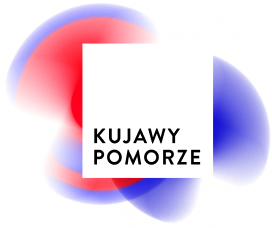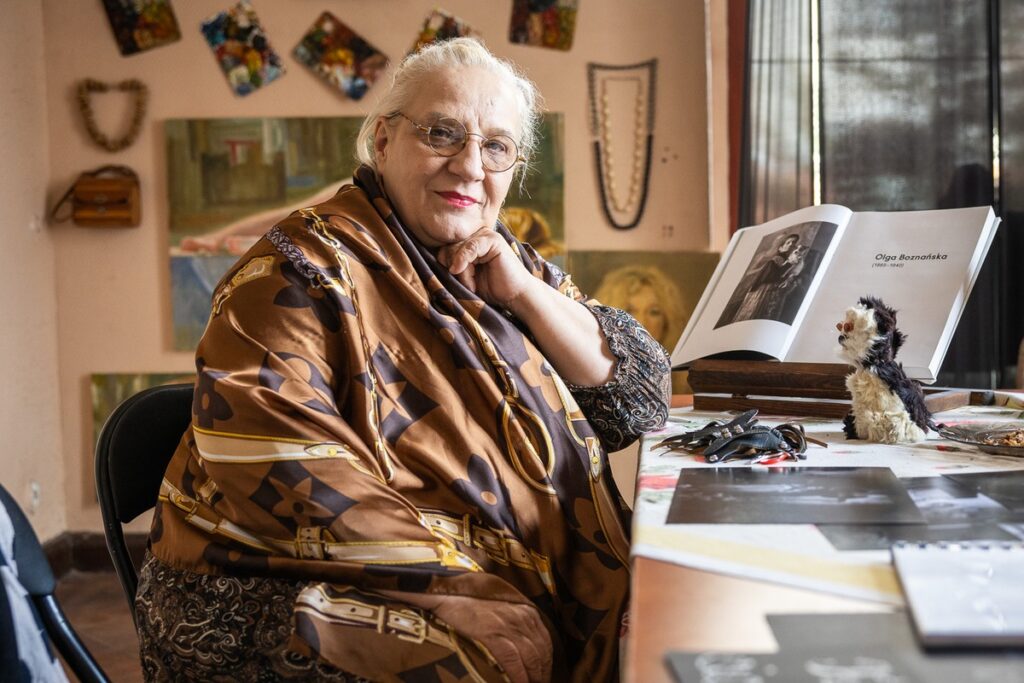
Interview of the Week: Agnieszka Niezgoda
A conversation with actress, poet, and puppeteer Agnieszka Niezgoda – recipient of the Marshal’s Artistic Scholarship.
Is it difficult to bring a puppet to life?
Yes, it is. All you need is a master’s degree in the arts (laughs). Puppet theatre in Poland brings together pure enthusiasts. It’s a small community of just a few thousand professionally trained puppeteers – actors, directors, stage designers, all holding degrees in the arts. To animate puppets professionally, one must study hard for four years in the puppetry department at one of two theatre academies: either in Wrocław, a branch of the Academy of Theatre Arts in Kraków, or in Białystok, which is a branch of the Warsaw Theatre Academy.
Education is important, but the ability to breathe life into puppets is something you’re born with. Puppetry is a blend of a perpetual child, thrilled by play, and a patient old fisherman, waiting hours for a catch. A puppeteer also resembles a miner – spending their life on their knees, working in darkness, often in cramped spaces, covered in dust, lifting weights with a crooked spine.
A puppeteer sees potential animation everywhere. Not just in classic puppets, but also in effigies, marionettes, rod puppets, glove puppets, bunraku [Japanese puppet theatre], Chinese shadow puppets, and many more. Ordinary objects can become puppets, acquiring human or animal characteristics through the puppeteer’s personality and creativity.
I’d also add that puppeteers are cheerful people, full of rhythm and a sense of mission. Without a doubt, this profession transformed the young poet I was in 1980, when I applied to the Puppetry Department of the State Higher School of Theatre in Wrocław, into a happy person. After all these years, I can say that puppetry is incurable (laughs).
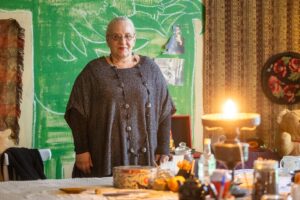
Agnieszka Niezgoda, fot. Szymon Zdziebło/tarantoga.pl dla UMWKP
Which role from your extensive acting career do you remember most vividly?
Every role leaves a mark. Roles prepared over weeks or months and performed for decades are like tattoos. That’s how it is with my parts in Little Red Riding Hood, where I play two characters – Little Red Riding Hood and the grandmother – because in puppet theatre, an actor has the ability to play several characters at once and even carry on conversations with themselves.
I also enjoy costume roles. When I was 30, with beautiful waist-length red hair, I played a teenage Jewish boy in the play The Night Watchman, or Once Upon a Time in a Jewish Town. When I put on the traditional Jewish outfit and a wig specially made for me from real hair, I transformed from a young mother of a six-year-old girl into a cheerful boy – a rascal, a student, a dreamer.
It was similar with the role of Ubica in King Ubu. Putting on the costume and mask would completely alter my personality. For that performance, I received an acting award at the national festival in Opole in 2005. The jury at the time included the wonderful actress Irena Jun, and receiving the award from her hands was – and still is – a great honor for me.
Becoming the painter Olga Boznańska is also made possible through a wig. Work on it took nearly a year, and it was made to order by a professional wigmaker. She handled everything – from studying all the available photos of the famous painter, to selecting the right hair color and type, and styling it into Boznańska’s characteristic bun. This wig is like a time machine that transports me a hundred years into the past. My dog Kleks joins me in this role, playing Boznańska’s beloved dog KwiKwi. That’s what connects me to Olga Boznańska – just like her, I never part with my little dog. Not even at work.
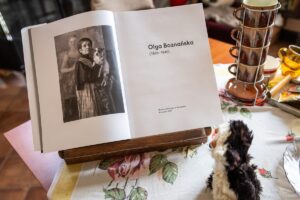
Fot. Szymon Zdziebło/tarantoga.pl dla UMWKP
You are returning to the role of Olga Boznańska after a three-year break. Why now?
The year 2025 has been declared the Year of Olga Boznańska by the Polish Parliament. That’s why, with the support of the Marshal’s artistic scholarship, I’m organizing a celebration of this extraordinary artist’s birthday. Olga would be turning 160 this year—a beautiful age—and her legacy still resonates. So, along with my beloved dog, I’ve decided to recreate her studio for two months on the spacious ground floor of the 19th-century Georg Soppart townhouse at 13 Sienkiewicza Street in Toruń. It’s not exactly luxurious, but there’s plenty of space, and in the late mornings, soft light pours in from the courtyard—perfect for painting.
I like to think it’s not just me who received this award—it’s Olga Boznańska herself. And she will make the best use of it. As always, she’ll spend half on paint, lamp oil, tobacco, tea, rent—and give the rest away to poor artist friends. Some will come just to eat and warm up. After all, it’s considered quite the thing to sit in Olga Boznańska’s salon. There you can meet fellow artists, sip free tea, and discuss matters profound, current, and artistic—because we must talk about art. And we must support artists with kind words, presence, and funding, encouraging them to keep creating.
To all of you—viewers, readers, listeners, patrons of the arts—you are invited into this world, a world whose key hangs around the neck of our esteemed birthday girl. On her behalf, I invite you this April and May to visit Olga Boznańska’s recreated studio and attend the performance My Portrait. See you there.
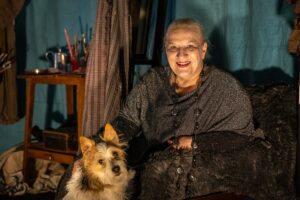
Agnieszka Niezgoda, fot. Szymon Zdziebło/tarantoga.pl dla UMWKP

